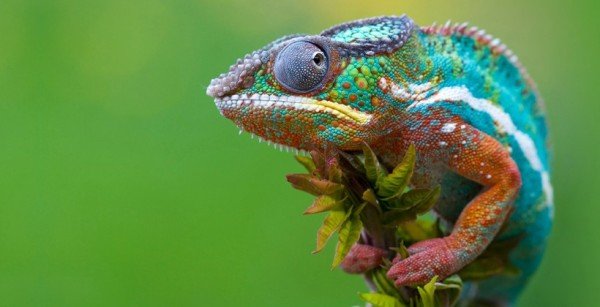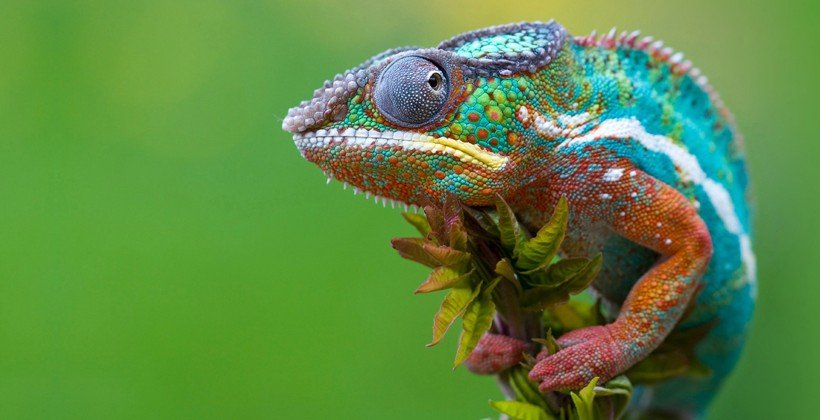A Swiss study found that chameleons accomplish their vivid color changes by rearrange the crystals inside specialized skin cells.
It was previously suggested that the reptiles’ famous ability came from gathering or dispersing colored pigments inside different cells.
The new results put it down to a “selective mirror” made of crystals.
Researchers also reveal a second layer of the cells that reflect near-infrared light and might help the animals keep cool.
Reptiles make colors in two ways: they have cells full of pigment for warm or dark colors, but brighter blues and whites come from light bouncing off physical elements like these crystals: so-called “structural colors”.
These colors can also be mixed. A vibrant green might arise from a structural blue overlaid by yellow pigment.
Some changes arise from shifting pigments. Tiny packets of the dark dye melanin, for example, can be spread throughout the tendrils of big “melanophore” cells – or gathered into the centre, to lighten the skin again. Many fish and reptiles grow lighter or darker in this way in response to stress, or to match their surroundings.
Panther chameleons, the subjects of the new study, do this as well. But males can also change between entirely different colors, turning a camouflaged green into a more spectacular yellow, for example, when they see a potential mate or a competitor.
Until now, many scientists had thought that these changes arose from a similar dispersion trick with yellow or red pigment. The new research suggests this is not the case.
Published in the journal Nature Communications, the study was a collaboration between quantum physicists and evolutionary biologists at the University of Geneva.
First of all, the team noticed there were no big, spidery cells containing yellow or red pigment that could explain the shifts in hue.
They hit upon the importance of the crystals when they looked inside a type of cell called an “iridophore” using an electron microscope. Whichever angle they looked at them from, the crystals formed an incredibly neat, regular pattern – just the sort of arrangement that creates structural colors.
[youtube ZJAyKNkxbvs 650]
